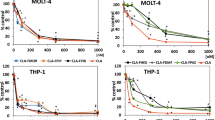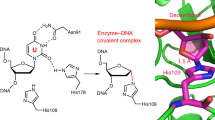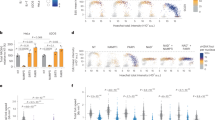Abstract
THE nucleoside, 1-β-D-arabinofuranosylcytosine (ara-C) and the unrelated compound, hydroxyurea, are known to inhibit DNA replication in bacterial and animal cells1–3. Arabinofuranosyl cytidine-5′-triphosphate (ara-CTP) specifically interferes with the action of DNA polymerase II in bacterial cell extracts4, whereas hydroxyurea affects the ribonucleoside diphosphate reductase reaction5. We have shown that ara-C and hydroxyurea bring about transformation of hamster embryo cells in tissue culture6. Further, it has also been demonstrated that ara-C inhibits the incorporation of 3H-D-glucosamine (a precursor of N-acetyl-neuraminic acid) into glycoproteins and glycolipids of hamster embryo fibroblasts and transformed cells7. In continuing these experiments we have been interested in, first, determining the site or sites of action of ara-C (presumably as its triphosphate) in the cell and second, studying other inhibitors of DNA replication as to their possible effect on glycoprotein and glycolipid synthesis.
This is a preview of subscription content, access via your institution
Access options
Subscribe to this journal
Receive 51 print issues and online access
$199.00 per year
only $3.90 per issue
Buy this article
- Purchase on Springer Link
- Instant access to full article PDF
Prices may be subject to local taxes which are calculated during checkout
Similar content being viewed by others
References
Cohen, S. S., Progr. Nucleic Acid Rec. molec. Biol., 5, 1 (1966).
Roy-Burman, P., Recent Results Cancer Res., 25, 1 (1970).
Graham, F. L., and Whitmore, G. F., Cancer Res., 30, 2477 (1970).
Rama Reddy, G. V., Goulian, W., and Hendler, S. S., Nature new Biol., 234, 286 (1971).
Young, C. W., Schochetman, G., and Karnofsky, D. A., Cancer Res., 27, 526 (1967).
Jones, P. A., Taderera, J. V., and Hawtrey, A. O., Eur. J. Cancer, 8, 595 (1972).
Hawtrey, A. O., Scott-Burden, T., Jones, P. A., and Robertson, G., Biochem. Biophys. Res. Commun., 54, 1282 (1973).
Bosmann, H. B., Biochem. Biophys. Res. Commun., 48, 523 (1972).
Weisner, M. M., J. biol. Chem., 248, 2536 (1973).
Weisner, M. M., J. biol. Chem., 248, 2542 (1973).
Van Diik, W., Ferwerda, W., and Van den Eijnden, D. H., Biochim. biophys. Acta, 315, 162 (1973).
Kean, E. L., and Roseman, S., Meth. Enzymol., VIII, 208 (1966).
Lowry, O. H., Rossbrough, N. J., Farr, A. L., and Randall, R. J., J. biol. Chem., 193, 265 (1951).
Neville, D. M., J. biophys. biochem. Cytol., 8, 413 (1960).
Graham, J. M., Biochem. J., 130, 1113 (1972).
Swanson, M. A., Meth. Enzymol., 2, 541 (1955).
Heppel, L. A., and Hilmore, R. J., Meth. Enzymol., 2, 547 (1955).
Jones, P. A., thesis (Univ. London, 1972).
Author information
Authors and Affiliations
Rights and permissions
About this article
Cite this article
HAWTREY, A., SCOTT-BURDEN, T. & ROBERTSON, G. Inhibition of glycoprotein and glycolipid synthesis in hamster embryo cells by cytosine arabinoside and hydroxyurea. Nature 252, 58–60 (1974). https://doi.org/10.1038/252058a0
Received:
Revised:
Issue Date:
DOI: https://doi.org/10.1038/252058a0
This article is cited by
-
Cytosine arabinoside in the treatment of acute myeloid leukemia: The role and place of high-dose regimens
Annals of Hematology (1991)
-
3-Deazauridine (NSC 126849): an interesting modulator of biochemical response
Investigational New Drugs (1986)
-
Inhibition of myogenesis in a rat myoblast line by 5-bromodeoxyuridine
Nature (1975)
Comments
By submitting a comment you agree to abide by our Terms and Community Guidelines. If you find something abusive or that does not comply with our terms or guidelines please flag it as inappropriate.



